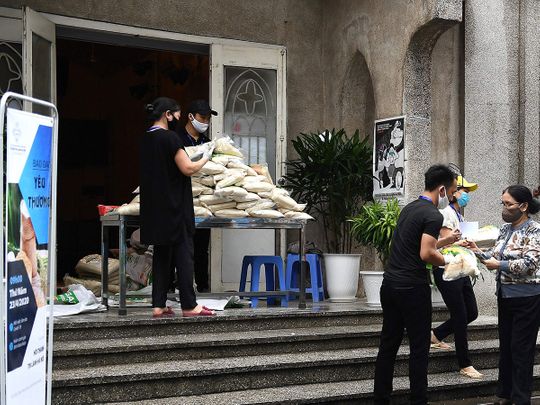
Dubai: There are now signs that point to financial conditions in most emerging markets stabilising in the second half of this year, according to an analysis by ratings agency Moody’s.
“Stabilising financial conditions in major emerging markets reflect a swift and well-orchestrated response from global policymakers to suppress systemic market turmoil from the pandemic,” said Rahul Ghosh, Senior Vice President of Emerging Markets Research at Moody’s.
However, the credit agency cautioned that the developing world will still be highly vulnerable due to debt burdens brought on by the ongoing coronavirus pandemic rattling growth in these markets.
“While the gradual stabilisation of financial conditions has lowered the immediate risks from the coronavirus crisis, emerging market credit prospects will remain fragile in the second half of this year and beyond,” Ghosh added.
Recovery increasingly uneven
As economies worldwide reopen post-lockdowns, the recovery has been seen as increasingly uneven in emerging markets as rising number of new coronavirus infections hurt growth for some, while others where the outbreak was brought under control fared much better than expected.
Data from parts of Asia, which includes China, Korea, Vietnam and Taiwan, and Poland in Europe, where coronavirus outbreaks have been brought under control, have been stronger than what economists had earlier expected. In contrast, activity is proving slower to recover in countries where new virus cases continue to rise sharply, such as India, Mexico and Chile.
“In global emerging markets (EM), capital flows, equity markets, bond spreads and - to a lesser degree - economic sentiment have begun to calm,” Ghosh said. “As market conditions settle, most major EM countries will avoid serious balance of payments crunches, making it easier for rated EM debt issuers to access dollar liquidity and return to the primary markets.”
Emerging market stocks rebound
Emerging market equities, which have dropped 14 per cent due to the pandemic since hitting a peak at the start of the year, rose sharply in June by about 9 per cent, posting the strongest gain for the major asset classes last month – indicated the MSCI Emerging Markets Index, which is used to measure equity market performance in global emerging markets.
Outflows from emerging market funds totalled more than $83 billion in March – widely speculated as the month where the pandemic crisis peaked worldwide, according to data from the International Institute of Finance (IIF).
Across emerging markets, economists note that the Philippines, Argentina, Colombia, Czech Republic, India, Malaysia, Mexico, Peru, South Africa and Thailand are economies that would experience deep recessions this year.
How deep will be the damage?
While some emerging markets have been successful in bending the curve of infections, substantial restrictions remain in place in most, economists had earlier indicated that economic damage from lockdowns and travel bans was likely to extend into the third quarter.
However, amid the starkly negative backdrop there is currently signs of hope that the markets would cap the losses as Moody’s latest EM Financial Conditions Indicators point to stabilising financial conditions across most major emerging markets in the second half of the year. But it’s not all rosy just yet.
The pandemic-induced shock to growth, earnings and debt burdens will increase the credit vulnerabilities in emerging markets, Ghosh said, while adding that even as governments relax containment measures, the legacy of lost economic output will be higher government debt burdens and corporate leverage.
High debt burdens, a key risk
“The coronavirus outbreak and its aftermath may accelerate the trend toward a more splintered and protectionist global economy, weighing on EM trade prospects well after lockdowns ease,” Ghosh added.
“The pandemic is amplifying structural weaknesses in sovereign credit profiles, reinforcing a gradual erosion of credit quality for some major emerging market sovereigns that had already been occurring for several years.”
Even despite the risks that markets are currently facing, analysts still vouch for the long-term underlying potential of the developing regions. Around the world, emerging economies are expected to grow around three times higher than developed markets until at least 2024, according to figures by the IMF.
Reliance on social bonds?
The coronavirus pandemic is spurring emerging market governments to issue social bonds, using the proceeds to fund their response to COVID-19, which could help establish such instruments as a popular asset class, the S&P Global Ratings agency revealed. Social bonds fund projects with primarily social objectives, including affordable health and housing.
Issuance of social bonds by government and corporate issuers in 2020 has already far outstripped the level seen in 2019. Between January and mid-June it totalled $49.8 billion, compared to $20.0 billion in 2019 and $9.6 billion in 2018, according to figures from the Climate Bonds Initiative.
S&P Global Ratings had noted last month that the social bond market is now growing more quicker than the market for green bonds, which were created to fund projects that have positive environmental and/or climate benefits.








